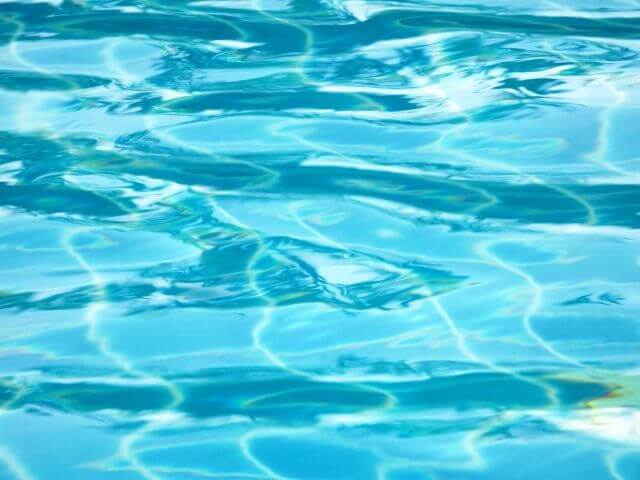Important Information About Pool Chemicals For Swimming Pools
August 8, 2022by DigitalVuePOOL AND SPA
Pool Chemicals & Chemistry
Pool chemicals are vital if you’ve been thinking about getting into swimming pools or are already in the market for one; here’s some good news: You don’t have to spend thousands of dollars and months of research and trial and error to make sure you’re buying a quality pool that’ll last. There are some simple things you can do now to help ensure that your pool won’t become a source of irritation and frustration down the road.
The first thing you want to do is to test the pH level of your pool. This is important because if the pH levels are too high or low, your pool will have problems like algae blooms and bacterial growth. If you find out that your current pool isn’t balanced, you can use chlorine tablets to bring it back into balance. Chlorine tablets are inexpensive and easy to use. Another option is to add potassium permanganate powder to the water; however, you must be careful not to exceed the recommended dosage.
Once you know what the pH level of your existing pool is, you can begin working on correcting it. To do this, you’ll need to buy a few different products:
- You’ll need to purchase a pool pump; this helps circulate the water around the pool and keeps it moving.
- You’ll want to buy a filter system; this allows you to remove impurities from the water.
- You’ll need to invest in a pool heater; this provides warmth to the water, making it easier to swim in.
You’ll probably want to consult a Wetworks Pool and Spa professional pool contractor to install everything correctly. Still, once you have the basics in place, you’ll be able to maintain your pool without spending hours each week cleaning it.
Balanced Pool Chemicals are Key
Balancing your pool water is key to keeping it safe and protecting against disease. Most pools are maintained with one or more of three main chemicals: chlorine, bromine, and salt. Chlorine kills algae and bacteria, while bromine helps prevent corrosion. Salt makes the water hard and keeps it clear.
Chlorine is added to most pools every week, usually once per day. Bromine is added about twice a month, depending on the pool size. Salt is added monthly, although some people add it weekly. All three chemicals should be mixed to make up a specific percentage. For example, a 50/50 mix of chlorine and bromine creates a 10% solution. This ratio ensures that the pool stays balanced and doesn’t over chlorinate.
Ask your local pool store if you’re unsure whether you’re adding enough chlorine to maintain balance. They’ll know what amount is needed based on the size of your pool and the type of filter system installed.
The Importance of Balanced Pool Chemicals
Balanced pool chemicals are essential for keeping your pool healthy, clean, and free of dangerous chemicals. This includes maintaining proper PH levels, keeping both calcium and magnesium concentrations within ideal ranges, and ensuring the correct amount of chlorine is present to kill off harmful microbes and keep your pool healthy.
Too much chlorine can cause skin and eye irritation and potentially severe health problems like respiratory infections. You can tell how much you need to add based on your pool size and type; most pools require about 4 ounces per 10,000 gallons of water.
If you notice your pool water becoming discolored or murky over time, you might consider adding additional chlorine to bring it back into balance. Remember, too little chlorine won’t do anything to help keep your pool clean, and too much chlorine could make things worse.
Weekly Pool Chemicals Testing
Backyard inground swimming pool owners should test their water weekly. If any chemicals are out of balance, you will need to check them daily until they are back in balance.
The most common mistake people make is testing too often. This leads to chlorine and bromine overuse, which can cause algae growth and even health problems. Testing every day or multiple times per day is unnecessary.
The best way to test your water is to use a simple test kit sold at hardware stores. These kits have instructions and everything else necessary to do the test correctly. Mix up some water and add a few drops of the test solution. Then wait 24 hours. If the color changes to green, yellow, orange, or red, you know what needs to be done next.
If you have to test the water regularly, you might consider installing a pump and filter system. A pump helps circulate the water, while a filter removes impurities like sediment and debris.
Total Alkalinity
Your pool needs a good dose of alkalinity to keep things stable. But what does “total alkalinity” mean exactly? And how do you test and adjust it?
The total alkalinity of your pool water is measured in parts per million (ppm). This value tells us how many milligrams of potassium hydroxide are needed to neutralize one gram of calcium carbonate, the main component of limestone. For example, if your pool contains 400 ppm of total alkalinity, we know that 4 grams of potassium hydroxide would be required to bring the pH down to 7.0. If your pool has 600 ppm of total alkalinity, we’d need 8 grams of potassium hydroxide to achieve the same effect.
Alkalinity is essential because it helps control the pH level in your pool. A low pH level can lead to health problems such as skin irritation, eye damage, hair loss, and even respiratory issues. Too much alkalinity can cause corrosion in the pool pump and plumbing system.
Total alkalinity levels vary depending on several factors, including the type of water source used, the minerals added during construction, and the age of the pool itself. Most pools today have a total alkalinity of around 500 ppm, though some newer pools can reach up to 1000 ppm.
pH
pH is one of those things most people don’t give a second thought about. But it’s important because it affects everything around us. For example, our bodies are constantly trying to maintain a balance between acids and bases. If we’re exposed to too many acids, we’ll start getting sick; if we’re exposed to too much alkalinity, we could develop health problems like kidney stones.
The pH scale runs from 0 to 14. Anything above 7 is considered basic; anything below 7 is considered acidic. The ideal pH level for swimming pools is 7.4 – 7,6. This means there are enough alkaline minerals in the water to keep swimmers healthy and comfortable. However, if your pool isn’t maintaining a proper pH, you might want to check it out. You can do this by testing the pH level of your water and adjusting accordingly.
Calcium Hardness
If you ever notice a white line or scaling around your pool’s water line, it’s probably calcium buildup. And how often you see the problem is directly related to your swimming pool’s calcium hardness level. Ideal Calcium Hardness levels range from 50 to 1000 parts per million (ppm).
The way to measure calcium hardness is simple. You have to add some chemicals into your pool water. Then wait about 24 hours for the readings to stabilize. Once the test is done, divide the reading by 4 to determine the number of ppm. For example, if your calcium hardness reading is 500 ppm, you know you have enough calcium hardness to keep your pool clear.
Now let’s talk about how much calcium hardness you need. Most pools require 200 – 400 ppm. But there are times when you want to raise your levels even higher. This is where calcium chloride comes in handy.
Calcium Chloride is used to increase your pool’s calcium hardiness. Calcium chloride is one of the most effective ways to do this. Just follow the usage instructions printed on your package.
Sanitizer
Sanitizer is what keeps our pools clean and germ-free. Without it, every pool could quickly become a breeding ground for germy bacteria.
Free Chlorine
Measures the amount of unused, available chlorine in the water. This number tells us how much chlorine is left in the water. If the free chlorine level is low, it indicates that there isn’t enough active chlorine to kill off harmful bacteria. In addition, if you notice a color change, it could mean algae is growing in your pool. To fix this problem, add additional chlorine to the water.
Total Chlorine
Measuring the total amount of chlorine in the water gives us an idea of how much chlorine is used. A high reading here might indicate that your pool is too chlorinated. You’ll want to reduce the amount of chlorine in the pool by adding less chlorine to the water. Remember, though, that reducing the amount of chlorine in a pool will make it harder to maintain.
Chloramine
This measurement is crucial because it helps us determine whether we’re getting a balance of chlorine and ammonia in the water. Ammonia is another type of disinfectant found naturally in swimming pools. Chloramine levels shouldn’t exceed 0.5 ppm.
Odor
If you smell chlorine in the air, you probably have too much chlorine in your pool. Too much chlorine can cause eye irritation, breathing problems, skin rashes, and asthma attacks.


